Review: SEACAM Silver housing for D500

In Use:
Camera Settings:
There are a number of camera settings that must be undertaken in order to get the best from this housing. The most critical (and I would argue that this is universal for all Nikon cameras in underwater housings) is to set the “Release button to use dial” to “Yes.” This is setting f6 in the Custom Settings dialog of the D500’s menu.
This allows almost all adjustments to be selected with one press, the adjustments to then be enacted with the dials and then be deselected by pressing the appropriate control button/lever again. This allows one-handed operation and is, in my opinion, critical.
Other important settings include: In the camera’s “Custom Settings Menu - Controls - Customize command dials (f4)” entitled “Menus and playback” should be set to “ON”. This allows you to use the command dials to scroll through the camera’s menu and to review images.
Lastly, the cameras release mode dial should be set to Continuous Low (CL). The housing does not have a control for the shooting mode, but via setting d1 (“CL mode shooting speed”), this can be set from 1 to 9 frames per second. Hence the shooting speed can be adjusted to suit the user’s requirements.
I also tend to switch off the camera’s image review, preferring to review by choice. This also means that the command dials default onto aperture or shutter speed adjustments. If image review is enabled and setting f4 as above is selected, the dials will scroll through images while the review is displaying, rather than adjusting exposure.
Ports and lenses
SEACAM ports and extension rings feature barrel and face O ring seals. Hence, the housings do not have a port lock system as the barrel O ring prevents leaking if the ports are rotated (within reason). Although most other companies have now resorted to port locking systems to prevent accidental floods, my experience is that the SEACAM port system is as reliable, just different in execution.
Of course, when combined with a vacuum system, ports are almost impossible to remove when the housing is depressurized.

SEACAM has recently invested in two commercial 3d printing machines and are now producing their zoom and focus gears with them. The materials that they now use has a high tolerance for extremes of temperature.
The gears fit onto lenses with the latter’s rubber zoom/focus rings in place. The gears tighten via small Allen headed bolt and nut. The geared sections are deliberately oversized in width so alignment doesn’t have to be too precise.

Somewhat uniquely, SEACAM offers controls for both zoom and focus gears on the D500 housing. As noted above, these are located on the housing’s body, which keeps the photographer’s hands back away from skittish subjects.
My experience with the D500’s AF system is that it is faster and more accurate than my eyes (although this may be as much to do with my eyesight as anything else!) In very low light or complete darkness, I tend to pre focus, as even with manual focus, I still cannot see enough to focus accurately. Once pre focused, I lock the focus by either not touching the AF On lever, or putting the AF selector into Manual.
Hence, I cannot see a need for manual focus with this camera and feel that the additional control dial could be happily removed.
Lenses can be changed via the port if required. The lens release lever is accessible. At this time however, the vacuum system’s electronics cannot be reset via the port, although a vacuum can of course still be pulled.
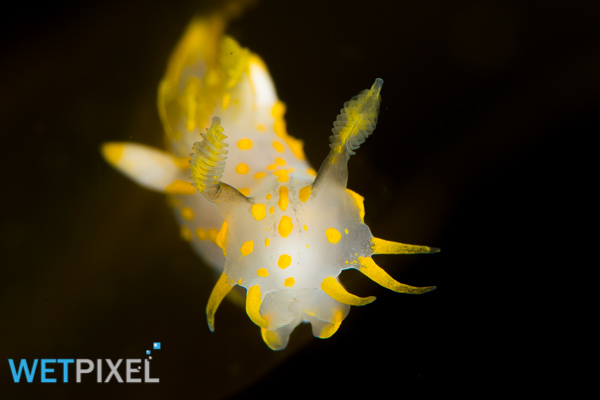
Lenses tested with the D500 in this housing include:
- Tokina 10-17mm f/3.5-4.5 AT-X 107 DX
- Nikon AF-S DX Nikkor 10-24mm f/3.5-4.5G ED
- Tokina 17mm f/3.5 AT-X Pro
- Nikon 60mm f/2.8 Micro-Nikkor AF-D
- Nikon 105mm f/2.8 G AF-S VR IF ED Micro Nikkor
SEACAM offers port and (at least) zoom ring compatibility for all of the above and other lenses. For full details, please check port compatibility for Nikon lenses on the SEACAM website.
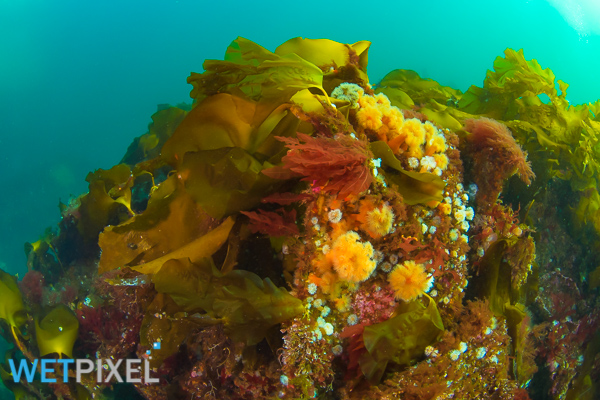
Shooting
The SEACAM Silver D500 is sized at 260 (10.2”) x 190 (7.5”) x 130 mm (5.1”) (excluding handles) and weighs in at 2750g (6.06 lbs). The dimensions and weight are identical to those of the D810/D800 housings. The means that trim and handling between models is very similar.
The housing is almost neutral in salt water with a 170 mm (6.7”) (CP) dome port and two SEACAM Seaflash 150 strobes on standard SEACAM arms.
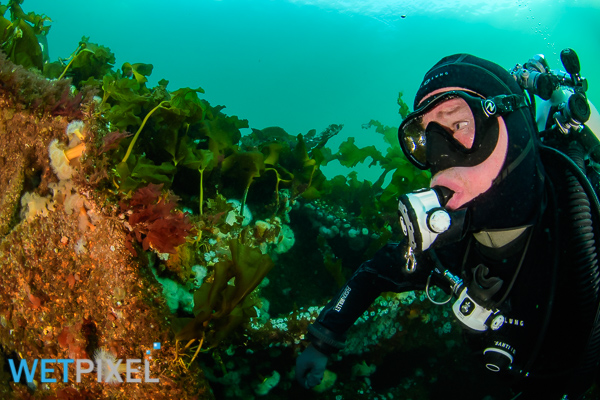
I found that this combination allows me to shoot one handed at arm’s length away. With a MIP macro port for the Nikon 60mm and two Inon Z240 strobes on short SEACAM arms, it is slightly negatively buoyant.
During extended sessions shooting macro in Scotland and Norway, the housing’s handling was very good. I have not tried it in fresh water with macro lenses.
I have also used it with a SEACAM Superdome with the Seaflash 150s and it is slightly positive, with the inevitable “dome up” twisting action, A few self adhesive wheel weights stuck onto the bottom of the dome’s shade swiftly sorted out both the weighting and the twisting.
I have used it with thick dry gloves in (very) cold clear water and also with bare hands.
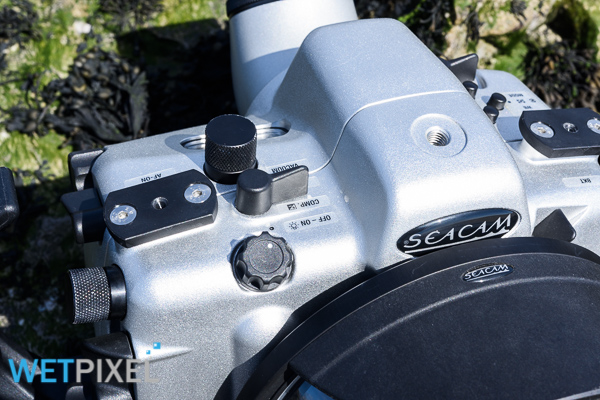
One of the issue with the new Nikon D5, D500 (and likely D820 when it is announced) was the relocation of the ISO control. ISO is a crucial control, especially given new camera’s amazing ability to produce usable imagery at high ISO. The relocation of the ISO button to the right hand side, near the shutter release button, has created a challenge for housing manufacturers. The left hand already has aperture and shutter dials, shutter release and AF On/AE/AF lock. The addition of Record, EV adjustments and now ISO makes for a very cluttered control area. From a productivity standpoint, photographers need to be able to adjust exposure and shoot, without removing the eye from the viewfinder and this clutter typically makes this more difficult.
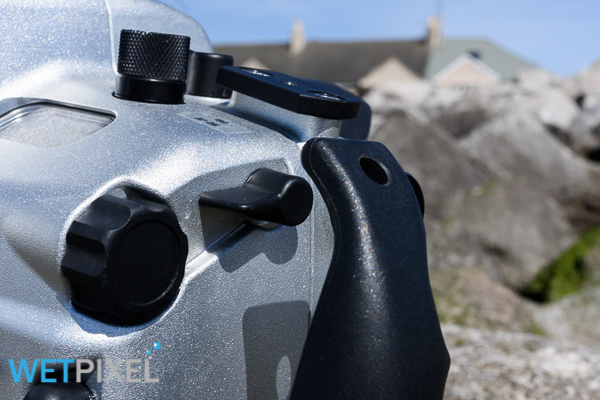
SEACAM seems to be the exception to this. The right hand has the main command dial (shutter speed), sub command dial (aperture) and shutter release lever. The only other control is a single thumb lever that activates AF (when AF on is selected) when depressed and ISO when the lever is pushed up. In my opinion, this simplicity makes adjusting exposure and shooting easier and hence more productive. I am simply more likely to “catch the moment” if my eye is on the viewfinder, not looking for controls.
Arguably, this does impact on the housing’s video shooting performance. The Record button is activated via a lever on top of it, so it is harder to trigger and keep everything steady. A good option if you are planning to shoot video is to set the shutter release to start/stop recording via the Movie - Custom Control assignment (g1) in the menu.
Saying that, if my primary use of this camera was to shoot video, I would equip it with an external monitor too.
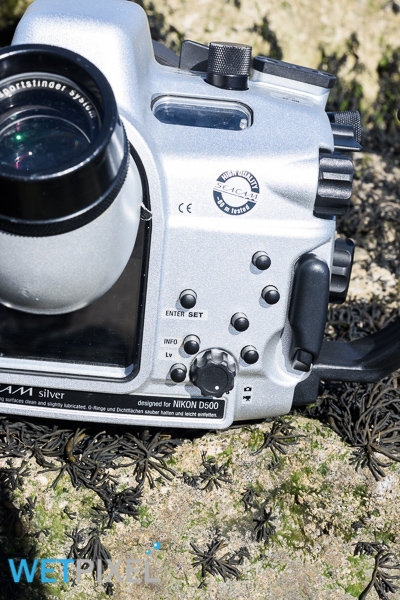
The lack of multi selector does mean that moving around the menu is less intuitive. This is deliberate to some extent as menu navigation is not critical while actually shooting. It does require a shift in mind set to appreciate that “less is more” (or can be). By focusing on critical controls and requiring a little bit of tinkering within the camera’s menu, the SEACAM approach does (I believe) increase my productivity.

Another example of how the minimalistic approach may work is the disabling of image review. By default, each time an image is shot the camera displays the resulting image for 4 seconds. This behavior encourages the photographer to stop and take a look at their image, rather than keeping shooting and using the exposure, focus and framing information available in the viewfinder. I found that removing the distraction was a positive influence.
From an environmental and fieldcraft standpoint, the tendency to tip the housing forward to view images has resulted in squashed macro critters and spoilt opportunities by spooking subjects. In my opinion, it is much better to shoot a series of images then back off and review.
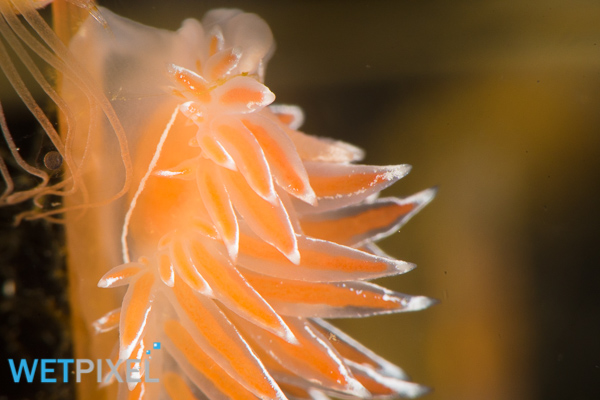
Practical stuff and workflow
SECAM’s housing design is slightly different from most others. The housing splits in half, rather than there being a front section with a “back door.”
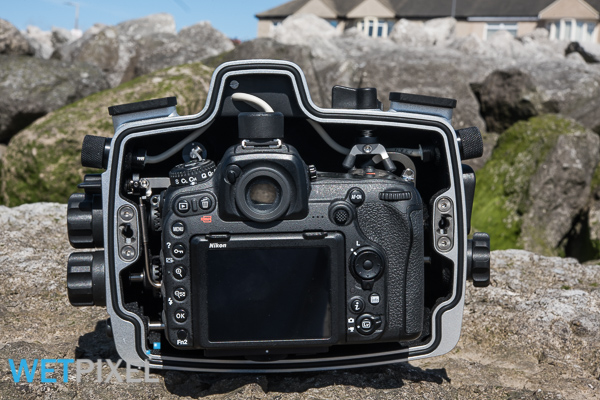
Internally, the camera is secured to a fixed platform, rather than being attached to removable saddle. Whilst this does make removing the camera from the housing slightly more onerous, the position of the camera and any lenses is precisely fixed within the housing, which help ensure that lens and control alignment is consistent.
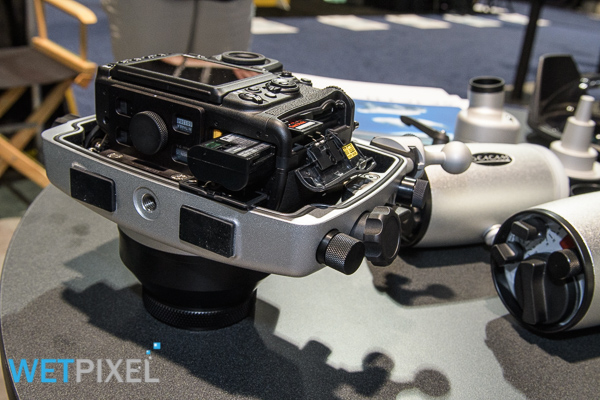
In the case of the D500 housing, it is possible to exchange XQD cards, SD cards and batteries with the camera mounted. This is an important workflow consideration as the D500 seems to use batteries relatively quickly, so changing batteries between dives is more important. In addition, I will often pull cards between dives and scan the images using Photomechanic to make sure that I am getting the results I am after. Being able to do so with the camera still mounted is an important time saver.
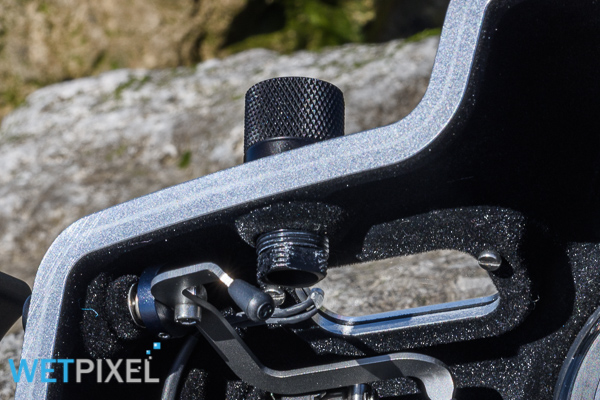
Wetpixel reviewed Seacam’s vacuum system last September. The Silver D500 housing has an additional port on the top of the housing that is close to the LCD window. This simplifies pumping the vacuum and watching the indicator LED indicators. It also offers the option of adding additional connections to the camera via the “spare” port.
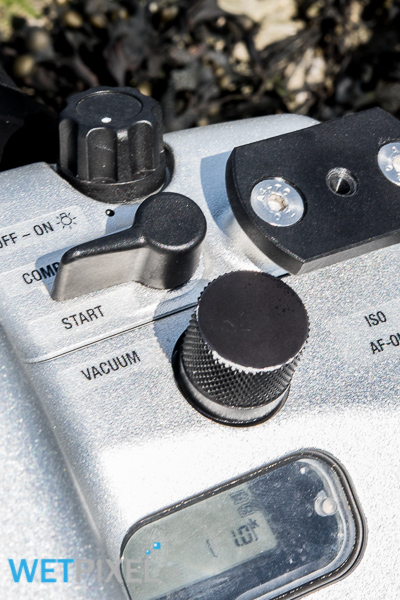
In general terms, I did miss the ability to set the vacuum circuitry when carrying out lens changes via the port. Currently, it is reset by moistening the leak detector that is located in the rear of the housing, so it is impossible to do so without removing the rear section of the housing. My understanding is that SEACAM is working on this.
Most people are aware that SEACAM offers a complete system for underwater shooters. Their strobes, for example, integrate directly into their housings. This simplifies setting up a functional system by ensuring that all components are compatible by design. However the downside of the approach is that it potentially limits choices.

Seacam (and others) have recognized this and now offers options that allow for Nikonos (N5) electrical connections, fiber optic strobe triggering and compatibility for M67 macro lenses. For example, Wetpixel recently reviewed the UWTechnics External Optical TTL Converter which was used to trigger Inon Z240 strobes via both TTL and manual modes with the SEACAM D500 housing.
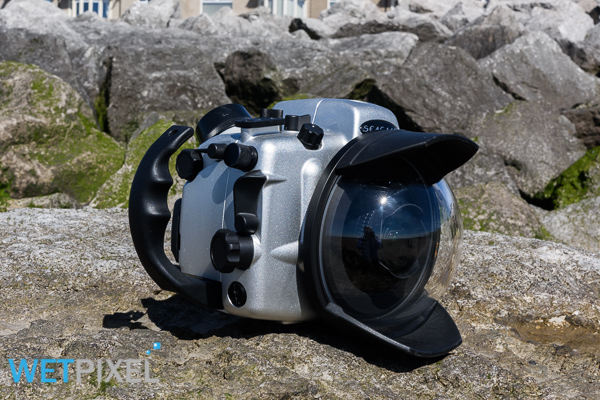
Durability and value
I should state that I have not had the opportunity to use this housing on trips that are particularly physically challenging. A few weeks on the Sardine Run would be an apt test of any housings durability, unfortunately, the SEACAM Silver D500 has not yet been! With this proviso, the housing has been used for around 45 days of diving in fresh and salt water and looks like it did when it came out of the box. Functionally, there have been absolutely no problems whatsoever.
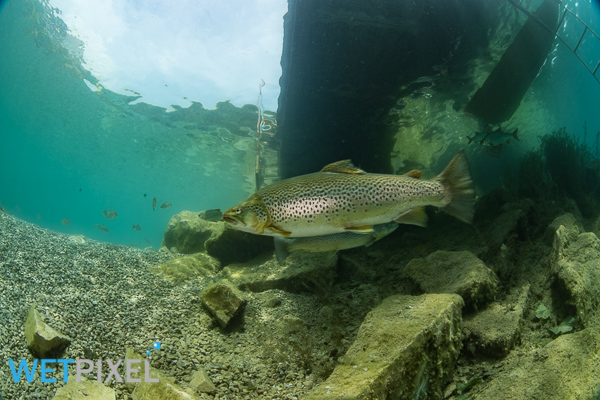
The issue of value is subjective, and it is sometimes difficult to justify the “less is more” view when comparing financial costs. There is no doubt that SEACAM housings are obsessively built to a very high standard. This translates into a long lifespan. Perhaps if you tend to switch cameras frequently, this advantage is less relevant, but if you tend to switch less regularly, the build quality may influence your decision.
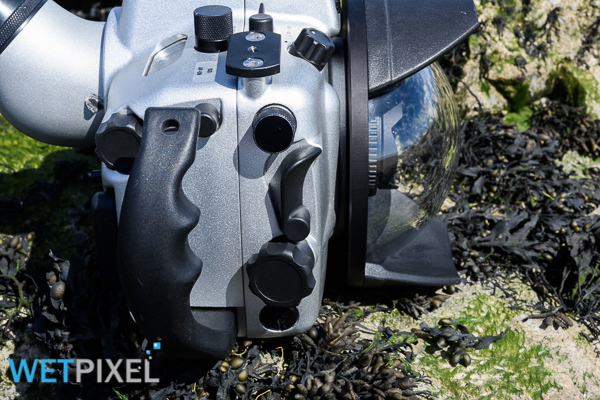
I would also suggest that the nature of the simplified control layout means that it takes some time to learn how to set up and use this housing. Most people will experience some frustration while first learning to use a SEACAM housing and would strongly recommend new owners spend some time at home and in an appropriate underwater environment before undertaking “mission critical” applications. To some extent this is exacerbated if the user has experience of other housings with more complicated control set ups.
It is perhaps a valid criticism of SEACAM that there is currently a limited amount of information available on how to set up and use their housings.

In terms of shooting with this housing, my feeling is that SEACAM has been faithful to their design philosophy. The innovative and elegant response to the D500’s ISO control position and the lack of clutter on the left hand side makes it simple and easy to use. Being able to shoot and adjust all my crucial exposure controls without lifting my eye from the viewfinder is a crucial productivity advantage.
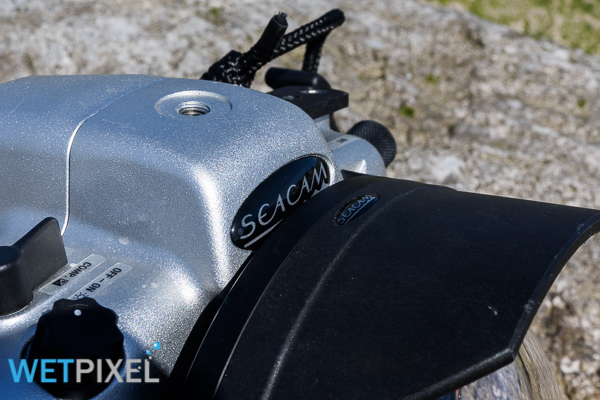
The SEACAM Silver D500 housing is available now. Please contact Seacam or your local dealer for more information.
FTC Disclosure
The SEACAM Silver D500 housing is on long term loan to the reviewer. Many thanks to Harald Hordosch and SEACAM for providing it for review. The Compact Dome (CP) port is also on loan while the S45 viewfinder is the reviewer’s own. Thank also to Gulen Dive Resort for providing an excellent venue for the testing.
Page 1: Introduction and housing overview.
Page 2: In use review and conclusions.